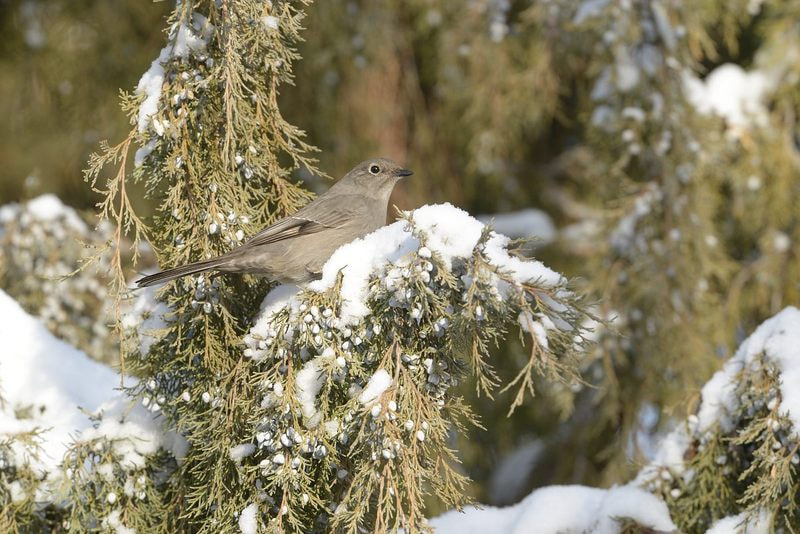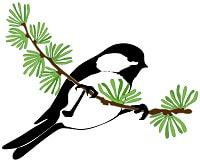Edmonton's Winter Birds
What can we expect to see?
What's uncommon or a winter rarity?
What's uncommon or a winter rarity?
As the seasons change, so do some of our birds.
Please view the photo gallery below which contains information on many of the winter birds seen regularly in Edmonton. We also suggest using a field guide such as Birds of Alberta by Chris Fisher and John Acorn (Slightly outdated but still very useful.) or Cornell's online guide All About Birds which has a feature to compare similar species. Remember, you may not be able to identify every bird. The more you watch birds, the more skilled you become. If you see something very unusual, try to get a photo and let your zone captain know.
Our ABC List has the species recorded for the Edmonton Christmas Count sorted by frequency as: A expected, B difficult to find, C rare. The list is updated at 5 year intervals.
Identification Gallery of common winter species
Hover or click to enlarge a photo and read ID details.
Hover or click to enlarge a photo and read ID details.
Small birds group: (10 species) Click on photo for details.
Similar species but not as commonly seen:
Check the photos of winter or immature birds: White-throated Sparrow, Hoary Redpoll, Purple Finch, American Goldfinch
Check the photos of winter or immature birds: White-throated Sparrow, Hoary Redpoll, Purple Finch, American Goldfinch
The woodpecker group:
Similar species but not as commonly seen: American Three-toed Woodpecker, Black-backed Woodpecker
This group of winter finches is present some years:
Mature males are reddish, females and immature males are a range of rusty brown, orange-yellow or greenish yellow.
Mature males are reddish, females and immature males are a range of rusty brown, orange-yellow or greenish yellow.
More winter birds:
Similar species but not as commonly seen:
A few of our summer waxwing may over-winter here. Note Cedars have pale under-tail feathers: Cedar Waxwing
A few of our summer waxwing may over-winter here. Note Cedars have pale under-tail feathers: Cedar Waxwing
Is it a raven or a crow?
It's more likely to be a raven! American Crows may over-winter in Edmonton in small numbers but Common Ravens are now present in larger numbers as they learn the advantages of wintering in an urban area. Check the bill shape/size and the tail shape if the bird is in flight. How to tell a raven from a crow.
It's more likely to be a raven! American Crows may over-winter in Edmonton in small numbers but Common Ravens are now present in larger numbers as they learn the advantages of wintering in an urban area. Check the bill shape/size and the tail shape if the bird is in flight. How to tell a raven from a crow.
Ready for a bigger challenge?
The following birds are our most common winter raptors. These birds are fast-flying, often offering only brief looks. They are difficult to identify, even for experienced birders. Plumage and proportion differences are subtle.
- Adults, except for Merlin females, are grey/blue on the back with brown pattern on the belly.
- All immatures (and female Merlin) are brown overall, plain on the back (may show white as feathers grow in), patterned on the belly.
- Size differences are not particularly helpful as it's difficult to judge in the field and there is size variance in the same species as females are larger than males. (Small male Cooper's may be the same size as large female Sharp-shinned.)
If you are keen to learn more about Edmonton area birds, and identifying them (along with other nature topics) , you may wish to join the Edmonton Nature Club's email discussion group: ENCnaturetalk
Thanks to the following ENC members for sharing photos: Gerald Romanchuk, Dawne Colwell, Steve Knight, Ann Carter, Janice Hurlburt, Dan Stoker, Don Delaney, Terry/Susan Sly, Steve Knight





























